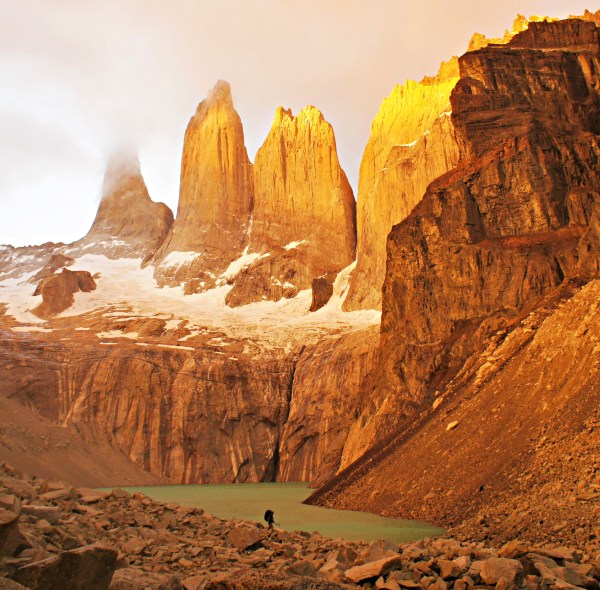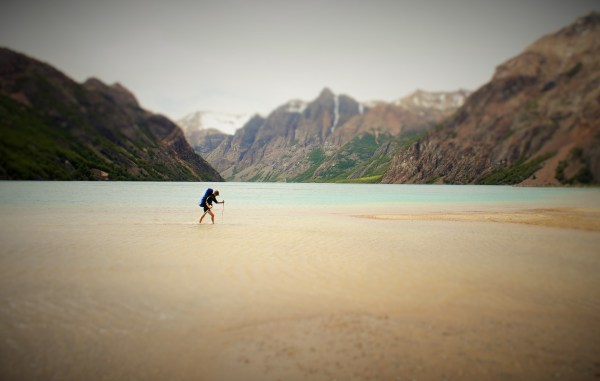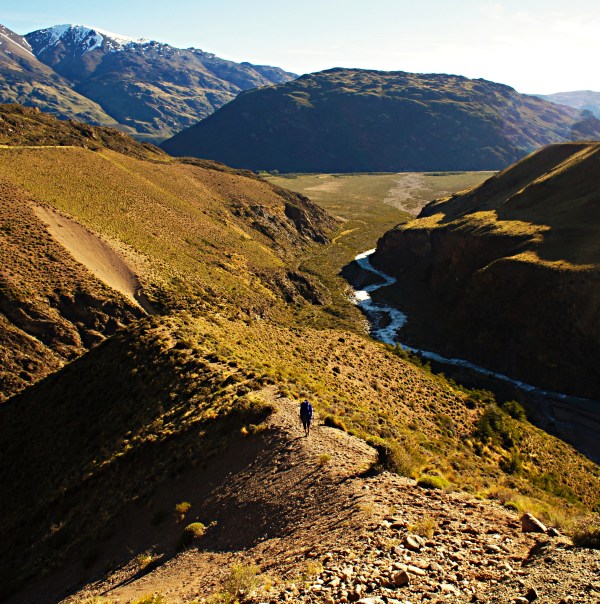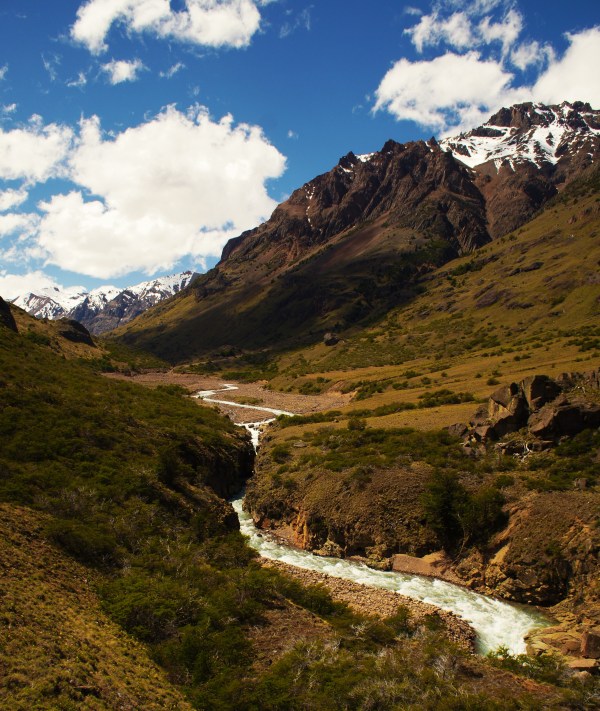If you set regular hair appointments, there are calmer places than Patagonia to put on your bucket list. Then again, if you hold strong hope that there is still wildness to be found on our swiftly tilting planet, forget your tangle-free locks for a moment and consider this: Patagonia howls.
Most are familiar with the classic “W” and “O” hikes found in Torres del Paine National Park, which is spectacular and not overhyped, regardless of the weather. This 600,000-acre park receives fewer than 150,000 visitors a year; Grand Canyon National Park, in contrast, receives five million folks annually. Like parts of the Grand Canyon, it’s not rare to find yourself alone on the trail for long stretches of time.

But crawling out of the warmth of your sleeping bag into freight-train winds to capture a photograph of Torres del Paine dusted in alpenglow at sunrise is not the only scene to strive for in Patagonia.
For example, did you know you’re now welcome to explore Chile’s new conservation success story and outdoor playground called Parque Patagonia? Or how about embarking on a 1,200-kilometer mountain bike trip that ends with you accessing El Chalten through a northern backdoor entry?
Options abound in this land of surprises, which is guaranteed to surpass your expectations no matter how high you set them. But to manage these anticipations, it’s good to know what Patagonia is not.
Patagonia is not a country.
It’s a region shared by both Argentina and Chile at the practical bottom of the civilized world. Slightly submerged pieces of ice fields, beech forests, lagoons, wetlands and glacial rivers help shape the puzzle of peaks, valleys and fjords that make up this sweeping tail end of South America.
Patagonia is not lifeless.
These harsh landscapes scraped by cool, dry winds and washed in heavy precipitation still host not only some of the oldest trees on earth but also a wondrous variety of la vida silvestre (wildlife).
Comical guanacos (llama cousins) animate the lonely grasslands while pink flamingos brace themselves in frigid alpine lakes on one matchstick leg against the wind. Pumas crouch in dens and the worlds’ smallest deer, called pudús, prance shyly along the forest floors, floors that do not hide even one species of snake writhing in soggy leaves.
Patagonia is not a place to “just chill,” as some people like to do on vacation.
While the high season for travelers—December, January and February—offers long days (the summer solstice sees 18 hours of light!), extreme weather can happen every day in a matter of minutes. Even when it’s not raining, sleeting or snowing, the sun is a constant threat through a seething hole in the ozone layer above here.
Patagonia is not considered part of the Roaring Forties because of some awesome music produced here 70 years ago.
This raucous name comes thanks to the legendary westerly gales found between the latitudes of 40 and 50 degrees in the Southern Hemisphere. The wind just is, always blasting you in some new, imaginative way. So long as you’re not setting up a tent, trying to cook or sort papers, you learn to appreciate its variations as it toys with your emotions.
As you hike with a 40-pound pack, for instance, on your back over mountain passes and through long stretches of sweeping valleys, open your mouth and you’ll feel your cheeks flap like you’ve stuck your head out of a car window moving 70 mph down a freeway. Try yelling out in frustration; the wind will swallow your cries. Fight tears.
And remind yourself: there’s no such thing as bad weather; just bad gear. Getting the wind out of your head starts by getting it out of your ears, so invest in a good hooded jacket, which provides some semblance of a refuge on the move (hooded jackets also help keep those precious tresses from intertwining).
Finally, Patagonia is not to be missed during a lifetime.
If you’re still reading, that means you’ve been enthralled by enough nature documentaries and climbing stories to know this is true. You know the rewards of putting yourself through the elements. You know the joy found in the solace of open spaces. Now the question remains: How do you want to suffer Patagonia?

Nick Martin crosses Lago Verde on day two of a three-day, 50-mile backpacking trek from Jeinimeni National Reserve to Chile’s newest national park, Parque Patagonia. Dozens of braided streams flow from the surrounding glaciers causing river and lake levels to rise as the weather warms. Early morning crossings are recommended when the water is at its lowest.

Parque Patagonia, Chile’s most recent gem of a national park and newest playground for outdoor enthusiasts, officially opened its doors in December 2014. Sandwiched between two other reserves, the national park boasts 650,000 acres of protected land, unnamed peaks and curious wildlife. Pictured here, the glacial Rio Aviles flows toward the sweeping steppe of Valle Chacabuco, one of Parque Patagonia’s many conservation successes.

The Rio Aviles flows mightily through Valle Aviles in Parque Patagonia. This glacial beauty eventually empties into Lago General Carrera, Chile’s largest lake, before continuing on to the Pacific Ocean via the magnificent Rio Baker.
